ITGB1
-
Official Full Name
integrin, beta 1 (fibronectin receptor, beta polypeptide, antigen CD29 includes MDF2, MSK12) -
Overview
Integrins are heterodimeric proteins made up of alpha and beta subunits. At least 18 alpha and 8 beta subunits have been described in mammals. Integrin family members are membrane receptors involved in cell adhesion and recognition in a variety of processes including embryogenesis, hemostasis, tissue repair, immune response and metastatic diffusion of tumor cells. This gene encodes a beta subunit. Multiple alternatively spliced transcript variants which encode different protein isoforms have been found for this gene. -
Synonyms
CD29;FNRB;MDF2;VLAB;GPIIA;MSK12;VLA-BETA;integrin beta-1 (avian);ITGB1;integrin, beta 1 (fibronectin receptor, beta polypeptide, antigen CD29 includes MDF2, MSK12)
Recombinant Proteins
- Mouse
- Human
- Rat
- Chicken
- Pig
- Bovine
- Sheep
- Felis catus
- Camelus bactrianus (Bactrian camel)
- Pongo Abelii
- Mus musculus
- E.coli
- Human
- HEK293
- Wheat Germ
- Mammalian Cells
- Human Cells
- HEK293T
- In Vitro Cell Free System
- His
- Non
- GST
- T7
- Flag
- Avi
- Fc
- DDK
- Myc
- SUMO
Background
What is ITGB1 protein?
ITGB1 gene (integrin subunit beta 1) is a protein coding gene which situated on the short arm of chromosome 10 at locus 10p11. Integrins are heterodimeric proteins made up of alpha and beta subunits. At least 18 alpha and 8 beta subunits have been described in mammals. Integrin family members are membrane receptors involved in cell adhesion and recognition in a variety of processes including embryogenesis, hemostasis, tissue repair, immune response and metastatic diffusion of tumor cells. This gene encodes a beta subunit. The ITGB1 protein is consisted of 798 amino acids and ITGB1 molecular weight is approximately 88.4 kDa.
What is the function of ITGB1 protein?
ITGB1 forms heterodimers with various alpha subunits, enabling cells to adhere to the extracellular matrix (ECM) through interactions with proteins like fibronectin, collagen, and laminin. ITGB1 is involved in the regulation of angiogenesis, neurogenesis, cell migration, proliferation, and survival. ITGB1 is essential in embryogenesis and tissue repair, contributing to normal development and wound healing. It plays a role in the immune system, participating in leukocyte adhesion and transmigration during inflammation. ITGB1 interacts with numerous proteins, indicating its central role in a complex network of cellular functions and signaling pathways.
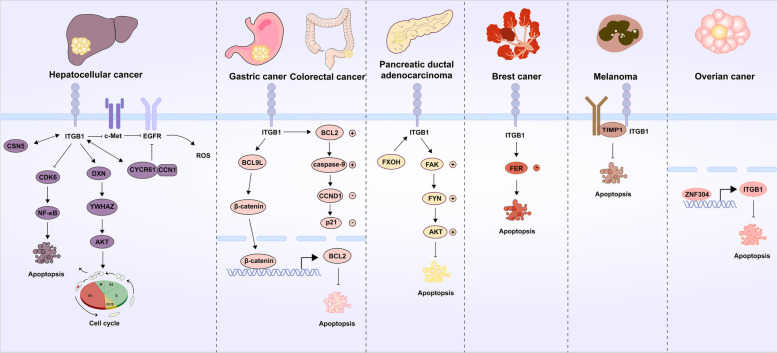
Fig1. ITGB1 and cell proliferation and apoptosis. (Chen Su, 2024)
ITGB1 Related Signaling Pathway
ITGB1 interacts with proteins like talin and kindlin, which link the integrin to the actin cytoskeleton, activating FAK and initiating downstream signaling events that affect cell survival, migration, and proliferation. Activation of ITGB1 can lead to the activation of PI3K, which in turn phosphorylates and activates Akt. This pathway is involved in cell survival, metabolism, and growth. ITGB1 engagement can also activate the mitogen-activated protein kinase (MAPK) cascade, which includes the extracellular signal-regulated kinases (ERK). ITGB1 can modulate the Wnt signaling pathway, which plays a role in cell fate determination and tissue homeostasis. ITGB1 contributes to the signaling mediated by transforming growth factor-beta (TGF-β), a superfamily of cytokines involved in cell proliferation, differentiation, and apoptosis.
ITGB1 Related Diseases
In the field of cancer, abnormal expression of ITGB1 is closely associated with the development, progression, and poor prognosis of a variety of tumors, including lung, breast, prostate, stomach, colorectal, pancreatic, and esophageal cancers. It promotes the malignant progression of tumor by promoting the proliferation, invasion, metastasis and angiogenesis of tumor cells. In addition to its role in cancer, ITGB1 is also involved in the occurrence and development of non-malignant diseases, such as autoimmune diseases, inflammatory diseases, cardiovascular diseases and tissue repair, and ITGB1 is involved in pathological processes by regulating the expression of disease-related genes.
Bioapplications of ITGB1
The high expression of ITGB1 in a variety of cancers makes it an attractive target for cancer therapy. Reducing ITGB1 expression or activity through drugs or other interventions may inhibit the proliferation and metastasis of tumor cells. The expression level of ITGB1 is closely related to the progression of various cancers and the prognosis of patients, and can be used as an important biomarker for cancer diagnosis and prognosis evaluation. Drug development targeting ITGB1 is ongoing and aims to discover small molecule compounds or biologics that can regulate ITGB1 activity, providing new strategies for cancer treatment. The role of ITGB1 in tissue repair and regeneration suggests that it may have potential applications in promoting wound healing and tissue regeneration.
Case Study
Case Study 1: Shuo Wang, 2024
Cementum is a vital component of periodontium, yet its regeneration remains a challenge. Pentraxin 3 (PTX3) is a multifunctional glycoprotein involved in extracellular matrix remodeling and bone metabolism regulation. However, the role of PTX3 in cementum formation and cementoblast differentiation has not been elucidated. In this study, researchers initially observed an increase in PTX3 expression during cementum formation and cementoblast differentiation. Then, overexpression of PTX3 significantly enhanced the differentiation ability of cementoblasts. While conversely, PTX3 knockdown exerted an inhibitory effect. Furthermore, they confirmed the presence of PTX3 within the hyaluronan (HA) matrix, thereby activating the ITGB1/FAK/YAP1 signaling pathway. Notably, inhibiting any component of this signaling pathway partially reduced the ability of PTX3 to promote cementoblast differentiation.
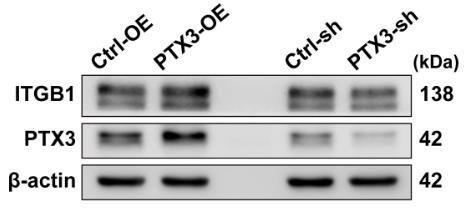
Fig1. The protein expressions of ITGB1 and PTX3.
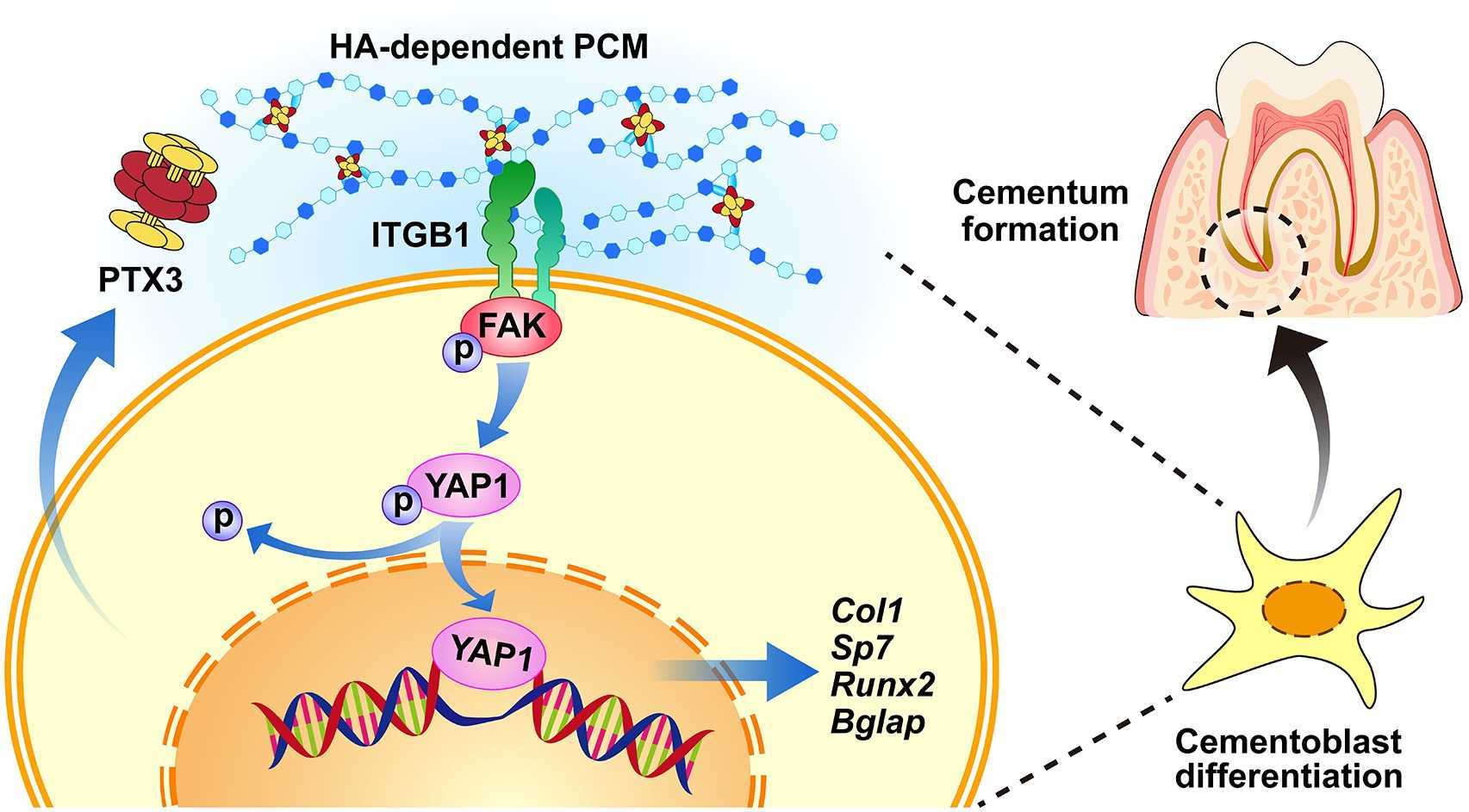
Fig2. PTX3 facilitates the assembly of HA, thereby activating the FAK/YAP1 signaling pathway via ITGB1.
Case Study 2: Jie Liu, 2024
Triple-negative breast cancer (TNBC) is the most malignant subtype of breast cancer, has a poor prognosis and limited access to efficient targeted treatments. Chronic unpredictable mild stress (CUMS) is highly risk factor for TNBC occurrence and development. Type X collagen (COL10A1), a crucial protein component of the extracellular matrix. Nevertheless, the impact of CUMS and COL10A1 on TNBC, along with the underlying mechanisms are still unclear. In this research, researchers studied the effect of CUMS-induced norepinephrine (NE) elevation on TNBC, and uncovered that it notably enhanced TNBC cell proliferation, migration, and invasion in vitro, and also fostering tumor growth and lung metastasis in vivo. Additionally, the investigation found that COL10A1 directly interacted with integrin subunit beta 1 (ITGB1), then activates the downstream PI3K/AKT signaling pathway, thereby promoting TNBC growth and metastasis, while it was reversed by knocking down of COL10A1 or ITGB1.
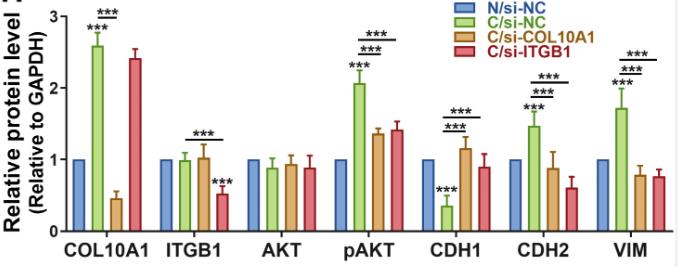
Fig3. Protein expression of COL10A1, ITGB1, biomarkers of PI3K/AKT signaling pathway and EMT.
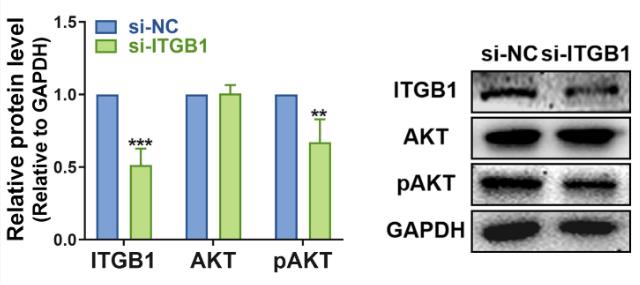
Fig4. Protein expression of ITGB1, AKT, and pAKT after ITGB1 knocking down.
Quality Guarantee
.
.jpg)
Fig1. SDS-PAGE (ITGB1-5770H)
.
.jpg)
Fig2. SDS-PAGE (ITGB1-4986H)
Involved Pathway
ITGB1 involved in several pathways and played different roles in them. We selected most pathways ITGB1 participated on our site, such as Rap signaling pathway,Phagosome,PIK-Akt signaling pathway, which may be useful for your reference. Also, other proteins which involved in the same pathway with ITGB1 were listed below. Creative BioMart supplied nearly all the proteins listed, you can search them on our site.
| Pathway Name | Pathway Related Protein |
|---|---|
| Cell adhesion molecules (CAMs) | CLDN16,CD40LG,CLDN7,MADCAM1,CD226,NLGN4X,Ntng2,H2-AA,CD8B1,ITGA9 |
| Hypertrophic cardiomyopathy (HCM) | TPM2,ITGA8,TGFB3,CACNA2D2,ITGA10,ITGA7,CACNA2D1,PRKAG1,ITGB3,PRKAA1 |
| Pertussis | CALM3,MAPK9,C1QC,C5,GNAI2,IRF3,LY96,IL12A,NOS2,RHOA |
| Focal adhesion | ITGA4,PIK3R1,CAPN2L,VEGFAA,VTNB,PAK2A,DIAPH1,ITGA5,COL6A5,MYL12.1 |
| Leishmaniasis | H2-AB1,FCGR2C,FCGR3A,H2-AA,STAT1,IL1B,IL4,FOS,MAPK11,ITGB2 |
| Axon guidance | KDR,PHB,COL4A3,RANBP9,DPYSL5,SEMA5B,EPHB4B,KIF4A,CAP2,TRPC5 |
| Dilated cardiomyopathy | SGCB,GNAS,ITGA5,ITGB8,IGF1,DES,TNNI3,ACTC1,CACNA2D2,MYH7 |
| Regulation of Actin Cytoskeleton | GNA12A,MYLK4,CD14,MYLPFA,VAV3B,PIP5K1BA,ITGA11A,EZRB,MOS,FGF20B |
| Phagosome | HLA-DPB1,ATP6V0E1,FCGR4,FCAR,STX18,BLB1,ATP6V1D,BMA2,THBS3A,MHC2A |
Protein Function
ITGB1 has several biochemical functions, for example, actin binding,cell adhesion molecule binding,collagen binding involved in cell-matrix adhesion. Some of the functions are cooperated with other proteins, some of the functions could acted by ITGB1 itself. We selected most functions ITGB1 had, and list some proteins which have the same functions with ITGB1. You can find most of the proteins on our site.
| Function | Related Protein |
|---|---|
| protease binding | LDLR,STIM1,VWF,CCDC71L,TRP53,BDKRB2,ITGAV,RYR1,OS9,SERPINB3 |
| integrin binding | NIPAL1,MMP14,S1PR2,LAMB1,CIB2,P4HB,GPNMB,FERMT3,WISP1B,COL5A1 |
| collagen binding involved in cell-matrix adhesion | ITGA10,ITGA2,Itga10&Itgb1,ITGA1 |
| laminin binding | LGALS3,ACHE,ITGA9,THBS1,ADAM9,PLEKHA2,ITGA7,BCAM,LYPD3,ITGA3 |
| protein binding | C19orf47,LTBR,GCA,MID1,BCL2,RUNX1T1,FLT3,HIP1,Clec4n,PBLD |
| virus receptor activity | ITGA5,SERPINB4,TNFRSF4,CD209A,HTR2A,DAG1,PVRL4,SELPLG,GYPA,TFRC |
| cell adhesion molecule binding | CD226,CADM3,TENM2,PVRL1A,NRXN3,NLGN3,VCAM1,SMAGP,ITGB2,LILRB2 |
| metal ion binding | FDX1B,LMAN2,PDE1A,RPS27.1,LHX1B,SMYD4,PRUNE2,ZFP146,EYA4,ERCC5 |
| actin binding | CXCR4,SVILA,FMN2,VPS18,INPPL1A,SNTB1,ESPN,MYH10,MYH1B,SPIRE1 |
Interacting Protein
ITGB1 has direct interactions with proteins and molecules. Those interactions were detected by several methods such as yeast two hybrid, co-IP, pull-down and so on. We selected proteins and molecules interacted with ITGB1 here. Most of them are supplied by our site. Hope this information will be useful for your research of ITGB1.
FLNA;ITGA5;VCAM1;ITGA4
Resources
Related Services
Related Products
References
- Harati, K; Slodnik, P; et al. Pro-apoptotic effects of pycnogenol on HT1080 human fibrosarcoma cells. INTERNATIONAL JOURNAL OF ONCOLOGY 46:1629-1636(2015).
- Tsai, YC; Hsiao, WH; et al. Genomic single nucleotide polymorphisms in the offspring of gastric cancer patients predispose to spasmolytic polypeptide-expressing metaplasia after H. pylori infection. JOURNAL OF BIOMEDICAL SCIENCE 22:-(2015).


